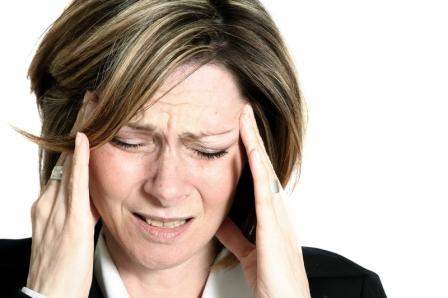
If you suffer from headaches, you’re not alone. Headaches are one of the most common health complaints. They can be simply distracting or completely debilitating. Many headaches fade away without treatment. Some are easily remedied. Still others are stubborn and recurring. But only rarely do headaches warn of a serious illness.
About 95% of headaches are primary headaches, meaning they’re not caused by an underlying medical condition. Other headaches, called secondary headaches, arise from medical disorders like swollen sinuses, head injury or tumors.
A headache may feel like a pain in the brain, but it’s not. The brain itself lacks pain-sensitive nerve cells. Instead, most headaches originate in the network of nerves and nerve-rich muscles and blood vessels that surround your head, neck and face. These pain-sensitive nerve cells can be activated by stress, muscle tension, enlarged blood vessels and other triggers. Once stimulated, the nerve cells transmit messages to the brain, causing you to feel pain.
If you’re feeling stressed, depressed or anxious—or if you’re not getting enough sleep—you’re at risk for a tension headache. Most diagnosed headaches are related to tension or muscle tightness, usually in the shoulders, neck, scalp or jaw. Tension headaches can cause a sensation of painful pressure on the head and neck. They sometimes feel like the grip of a tight elastic band around your head.
Migraine headaches are the second-most common, striking about 3 times more women than men. Migraine pain is often described as intense, pulsing or throbbing. Migraine sufferers can have extreme sensitivity to light and sound. In some cases, nausea and vomiting accompany the headache. Although the exact cause of migraine pain is unknown, one theory is that it’s linked to the widening and tightening of blood vessels surrounding the brain, which irritates the nearby nerves.
A less common but more severe type of headache occurs in “clusters,” often at the same time of day for several weeks. These cluster headaches usually begin suddenly as a sharp or burning pain centered around one eye. The pain can last up to 3 hours.
NIH scientists are working to better understand what causes headaches and how they can be treated. Some researchers are looking at complementary and alternative therapies like acupuncture, which has shown promise in some studies, although results have been mixed.
Most people can relieve headache pain by making lifestyle changes, learning ways to relax and taking pain relievers. If these approaches don’t work, your doctor may have more suggestions.
Let your health care provider know if you have sudden, severe headaches. Get medical help right away if you have a headache after a blow to your head, or if you have a headache along with fever, confusion, loss of consciousness or pain in the eye or ear.
National Institute of Health
Tags: head hurt, headache, migraine, why migrains, women than man
Leave a Reply
You must be logged in to post a comment.